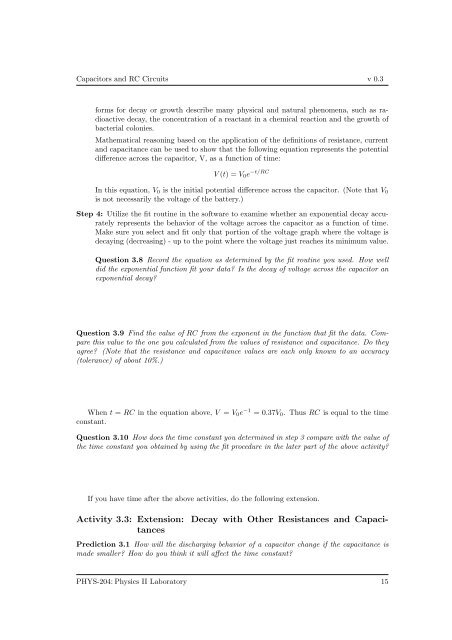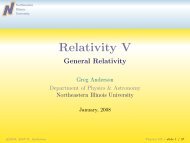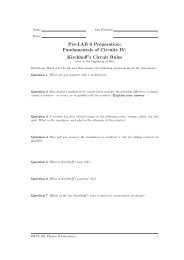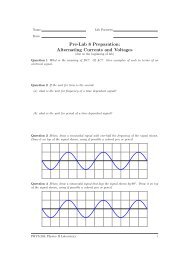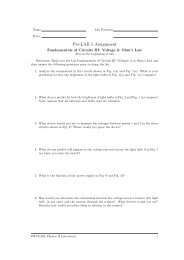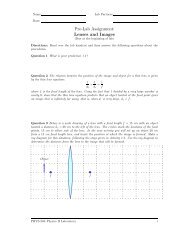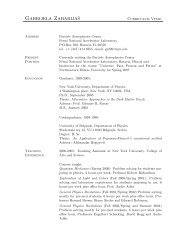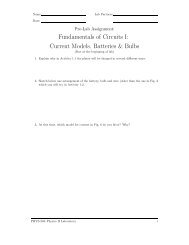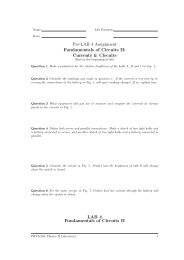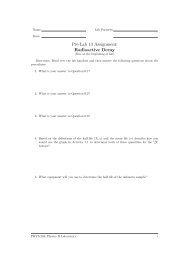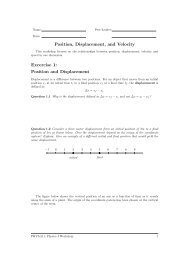Pre-Lab 7 Assignment: Capacitors and RC Circuits
Pre-Lab 7 Assignment: Capacitors and RC Circuits
Pre-Lab 7 Assignment: Capacitors and RC Circuits
- No tags were found...
Create successful ePaper yourself
Turn your PDF publications into a flip-book with our unique Google optimized e-Paper software.
<strong>Capacitors</strong> <strong>and</strong> <strong>RC</strong> <strong>Circuits</strong> v 0.3forms for decay or growth describe many physical <strong>and</strong> natural phenomena, such as radioactivedecay, the concentration of a reactant in a chemical reaction <strong>and</strong> the growth ofbacterial colonies.Mathematical reasoning based on the application of the definitions of resistance, current<strong>and</strong> capacitance can be used to show that the following equation represents the potentialdifference across the capacitor, V, as a function of time:V(t) = V 0 e −t/<strong>RC</strong>In this equation, V 0 is the initial potential difference across the capacitor. (Note that V 0is not necessarily the voltage of the battery.)Step 4: Utilize the fit routine in the software to examine whether an exponential decay accuratelyrepresents the behavior of the voltage across the capacitor as a function of time.Make sure you select <strong>and</strong> fit only that portion of the voltage graph where the voltage isdecaying (decreasing) - up to the point where the voltage just reaches its minimum value.Question 3.8 Record the equation as determined by the fit routine you used. How welldid the exponential function fit your data? Is the decay of voltage across the capacitor anexponential decay?Question 3.9 Find the value of <strong>RC</strong> from the exponent in the function that fit the data. Comparethis value to the one you calculated from the values of resistance <strong>and</strong> capacitance. Do theyagree? (Note that the resistance <strong>and</strong> capacitance values are each only known to an accuracy(tolerance) of about 10%.)When t = <strong>RC</strong> in the equation above, V = V 0 e −1 = 0.37V 0 . Thus <strong>RC</strong> is equal to the timeconstant.Question 3.10 How does the time constant you determined in step 3 compare with the value ofthe time constant you obtained by using the fit procedure in the later part of the above activity?If you have time after the above activities, do the following extension.Activity 3.3: Extension: Decay with Other Resistances <strong>and</strong> Capacitances<strong>Pre</strong>diction 3.1 How will the discharging behavior of a capacitor change if the capacitance ismade smaller? How do you think it will affect the time constant?PHYS-204:Physics II <strong>Lab</strong>oratory 15


